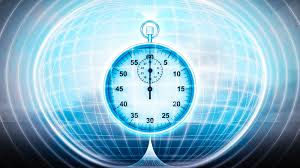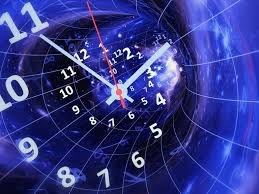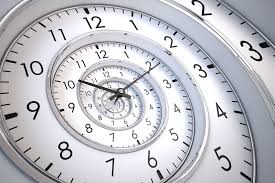Time is perhaps the most mysterious and unyielding force we experience. It flows unceasingly forward—never backward. We age, we remember the past but not the future, and broken eggs don’t spontaneously reassemble. But why is this the case? Why does time have a direction, an “arrow,” pointing from the past to the future?
To explore this question, we need to delve into physics, cosmology, and thermodynamics. The direction of time—often referred to as the arrow of time—is a subject that has fascinated scientists and philosophers for centuries. Despite the fundamental laws of physics being mostly time-symmetric, the arrow of time emerges from deeper principles governing the universe.
This article will explore the scientific foundations behind the arrow of time, the role of entropy, and why the future is different from the past.

Time: A One-Way Street?
When we observe the world around us, time appears to flow in one direction. A glass falls off a table and shatters into pieces, but we never see those shards jump up and reassemble into a glass. Smoke rises from a fire and disperses, never reforming into a neat pile of wood and kindling.
This asymmetry is not merely anecdotal—it underpins our very sense of causality and memory. We remember yesterday, not tomorrow. We plan for future events based on current knowledge, not the reverse. Time seems intrinsically directional.
And yet, the fundamental laws of physics do not enforce this direction.
Time-Symmetry in Physics
Most fundamental equations in physics—like Newton’s laws of motion, Maxwell’s equations of electromagnetism, and even quantum mechanics—are time-reversible. This means that if you filmed a physical process and played it backward, the equations would still hold true.
For instance, imagine a pendulum swinging in a vacuum with no friction. Whether it’s moving left to right or right to left, the laws governing its motion remain the same in both directions. If you reversed time, the pendulum would simply trace its path backward.
So, where does this one-way arrow of time we observe in daily life come from?
The answer lies in thermodynamics, specifically the Second Law of Thermodynamics.
Entropy: The Driver of Time’s Arrow
The Second Law of Thermodynamics states that in a closed system, entropy—a measure of disorder or randomness—tends to increase over time.
Think of a deck of cards. If you meticulously order it by suit and number, that’s a low-entropy state. Shuffle it thoroughly, and the cards become randomly arranged—a high-entropy state. Returning it to the ordered state by random shuffling alone is extraordinarily unlikely.
Entropy gives rise to what is often called the thermodynamic arrow of time. This is the most widely accepted explanation for time’s forward direction: things move from order to disorder, not the other way around.
Broken glasses don’t reassemble because doing so would require an extraordinary decrease in entropy—something so improbable it might as well be impossible.

The Role of Probability
The Second Law isn’t a fundamental constraint like gravity or electromagnetism—it’s statistical. It doesn’t say entropy can’t decrease, just that it’s incredibly unlikely.
Imagine releasing a gas molecule into a room. There are countless places it could go—so it’s overwhelmingly more probable it will spread out rather than huddle in a corner. This tendency toward equilibrium is what gives entropy its power to shape the arrow of time.
So, time moves forward because it’s statistically inevitable that entropy increases.
The Cosmological Arrow of Time
To understand why the universe started in a low-entropy state, we need to look at the cosmological arrow of time—the evolution of the universe itself.
At the moment of the Big Bang, the universe was in an incredibly hot, dense, and low-entropy state. Over billions of years, it expanded, cooled, and evolved into the complex structure we see today—galaxies, stars, planets, and life.
But why was the early universe low in entropy to begin with?
This remains one of the biggest mysteries in physics. According to physicist Roger Penrose, the Big Bang’s initial conditions were extraordinarily special. The probability of such a low-entropy start occurring by chance is staggeringly small—something like 1 in 10^10^123.
This implies that the arrow of time is tied deeply to cosmological initial conditions, rather than a fundamental law of nature. In essence, time flows forward because the universe started in a highly ordered state.
Memory, Causality, and the Psychological Arrow
We’ve discussed thermodynamic and cosmological arrows, but what about our own experience of time?
We remember the past but not the future. This is called the psychological arrow of time, and it aligns with the thermodynamic arrow. Memory formation involves physical processes that increase entropy—like neural activity, synaptic changes, and chemical reactions in the brain.
Our sense of cause and effect also relies on this directionality. You flip a light switch (cause), and the light turns on (effect). If the future could influence the past, causality would break down—and with it, our ability to reason or make predictions.
Thus, our perception of time’s direction is grounded in physical processes governed by entropy.
Quantum Mechanics and Time
Quantum mechanics adds another layer of complexity to the question of time.
The Schrödinger equation, which governs quantum systems, is time-symmetric. However, when a quantum system is measured, it appears to “collapse” into a definite state—a process that seems to be irreversible.
This has led some physicists to consider whether wavefunction collapse might be the origin of the arrow of time. However, this remains highly speculative, and the majority view still favors entropy as the dominant factor.
Another area of interest is quantum decoherence—the process by which quantum systems lose their quantum behavior and begin to act classically. Decoherence also appears to be irreversible, but it’s closely linked to entropy and environmental interaction.
The Multiverse and Reversing Time
Some speculative theories suggest that in certain regions of a multiverse, time might run backward.
For instance, in models where universes are born in pairs, one universe might have time flowing in the direction we experience, while the other flows in the opposite direction. Each would perceive time as moving forward from its own frame of reference.
Although these ideas are fascinating, they remain purely theoretical. There’s currently no experimental evidence to support them.

Can Time Reverse?
In principle, if we could reduce entropy, could we reverse time?
This is more a philosophical or science fiction question than a practical one. To reverse time in any meaningful way, we would need to reverse every microscopic interaction, down to the positions and velocities of every particle in the universe. The complexity of this task is beyond comprehension.
Even if it were possible, such a reversal would erase our memories and restore the universe to a prior state, meaning we wouldn’t be aware that time was reversed.
So, while the laws of physics allow for time to be reversed, reality makes it virtually impossible.
The Mystery Continues
Despite the thermodynamic explanation, many questions remain open:
- Why did the universe begin in a low-entropy state?
- Is entropy the only driver of time’s arrow?
- Could time run differently elsewhere in the universe—or in other universes?
These are questions at the frontier of physics, tying into quantum gravity, cosmology, and the nature of time itself.
Conclusion
Time’s forward march is one of the most familiar yet deeply puzzling aspects of our reality. The arrow of time emerges not from the fundamental laws of physics—which are mostly time-symmetric—but from the Second Law of Thermodynamics and the initial conditions of the universe.
Entropy, the measure of disorder, holds the key. As systems evolve from order to disorder, the arrow of time emerges naturally. Our memories, our aging, and the unfolding of cause and effect are all rooted in this universal trend.
While the mystery of time’s origin and its ultimate nature still beckon, what we do know offers a profound glimpse into why we live in a universe where the past is behind us and the future lies ahead.
Time, it seems, moves forward not by command, but by the inevitable pull of entropy.

Read more:https://nfds.xyz/wp-admin/post.php?post=21&action=edit


